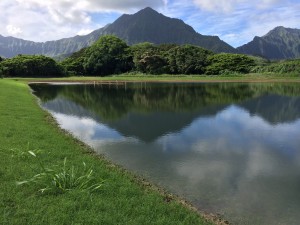DLNR Preparing Draft Kawainui Master Plan And EIS
Posted on Apr 10, 2014DEPARTMENT OF LAND AND NATURAL RESOURCES
News Release
| NEIL ABERCROMBIE GOVERNOR |
WILLIAM J. AILA JR,
CHAIRPERSON |
For Immediate News Release April 10, 2014
DLNR PREPARING DRAFT KAWAINUI MASTER PLAN AND EIS
HONOLULU – After an extensive public input process, the Department of Land and Natural Resources (DLNR) will release a draft updated master plan for its management of the Kawainui-Hamakua Complex on May 16. At that time, DLNR will initiate a 30-day comment period to seek public comments on the draft plan.
“We will continue to develop and finalize our master plan and prepare an EIS as part of the process, which allows opportunities to hear community concerns,” said William J. Aila, Jr., DLNR chairperson. “We ask for everyone to go through this important process with us as we listen to all voices in the community.”
The draft master plan, an update of the 1994 Master Plan for Kawainui Marsh, is the result of ongoing discussion with the public that seeks to strike a balance among a wide range of opinions regarding management of the area. An EIS will also be prepared for the project that will allow the community to review environmental impacts associated with the updated master plan concepts as part of that environmental review process.
“We want to make it clear that our primary concern is protection and management of the wetlands in Kawainui and Hamakua,” Aila said. “Our main objectives within the marsh are management of native water bird habitat, including habitat for Hawaii’s four species of endangered waterbirds, and the migratory shorebirds and waterfowl that utilize the area on a seasonal basis.”
“The built elements currently being considered in the draft master plan revision – trails, education center, and cultural facilities – are the result of input we have received from the community,” he added. “Neither our Divisions of Forestry and Wildlife and State Parks nor the planners have an agenda either way regarding built elements and public access. We are seeking to accommodate the various opinions and views presented to us. These proposed features are common to natural areas of this type throughout the country and the world. Whatever built elements ultimately make it into the revised plan should not detract from the fact that our primary focus is protection and management of the natural resources at the Kawainui-Hamakua Complex. We have no intention or interest in creating a ‘tourist attraction’ at Kawainui Marsh, as some have suggested.”
Another important element of the master plan for Kawainui Marsh is the flood control project installed by the City and County of Honolulu and the U.S. Army Corps of Engineers. This involves maintenance of the flood control levee, and maintaining the marsh lands in such a way as they do not inhibit water flow through the marsh and out into the ocean.
According to David Smith, Division of Forestry and Wildlife (DOFAW) Oahu branch manager, “The main elements of our resource management program include control of invasive vegetation that is choking out bird habitat. This is a very large and ongoing task involving a huge number of personnel-hours and highly specialized equipment. In addition, the program includes control of non-native predators such as cats, dogs, mongooses and rats that prey on the waterbirds. In the upland areas, we are preserving and managing existing forest cover, and converting non-native forest to native forest through selective control of certain tree and shrub species, and the planting of native species.”
These natural resource management activities make up the bulk of DOFAW’s work in the marsh. Other land management responsibilities include cleaning up illegally dumped trash, cleaning out homeless camps along the marsh periphery, control of illegal access and off-road vehicles that damage marsh resources, clearing over-grown vegetation, mowing open lawn areas, and cleaning up decades of abuse and neglect to the marsh before DLNR gained control of the land. These land management activities are an ongoing, though costly part of DOFAW’s responsibility as stewards at Kawainui.
# # #
Media Contact:
Deborah Ward
Public Information Specialist
(808) 587-0320

